Heartwarming and kind of humorous animals
Here is a special interview with Tsubasa Kuroda, a.k.a. trikotri, who is known for her specialty craft: pom-pom animals. She crafts fluffy animal mascots out of yarn pom-poms with the needle-felting technique. Kuroda is active in diverse fields, including the textile design with her brand “torikotori” launched in 2018.

Kokka-fabric.com (KF): We hear you worked at a craft shop after studying painting at the Fine Arts Department, Tokyo University of the Arts.
I got a job in Tokyo after graduating from university, but it didn’t last long. After that, I worked as a salesperson at a craft shop in Sendai for five and half years, where I was responsible for teaching workshops and making shop samples. It was a trial knitting lesson at the store when I started creating pom-pom works. I picked the pom-pom making project for the lesson because it was approachable and fun for beginners and children. I made very simple animals such as sheep and rabbits as my first project.
I enjoyed the indescribable texture as well as different patterns varied according to color combinations of yarns. I got hooked on making pom-poms. Going through trials and errors to learn how to make patterns, I crafted a chipmunk and a sparrow. I was deeply impressed by their cuteness. It was the moment when the pom-pom animals became my professional and personal craftwork.

KF: It was fateful, wasn’t it?
At first, I tried not mix my job with pleasure. However, the more I worked as the shop’s workshop instructor, the less boundary between work and hobby. I couldn’t stop thinking about work even while being at home, and finally I felt completely overwhelmed. After agonizing, I quit that job.
KF: Then you moved to a new job in the apparel industry.
I did. Being a salesperson at a clothing store, I submitted my entries to a handicraft competition named “The 1st Handmade Awards produced by Fujikyu x minne”. I wanted to go through that experience.
KF: You won the grand prize in it. Was your craft book published soon?
I actually got a few offers to make a pom-pom craft kit and publish a craft book just after receiving the award in February 2015. At that time, however, I was obliged to decline those offers because I had been employed by the clothing store. In that summer, when I quit that job, I received a book proposal from Seibundo Shinkosha. I finally made up my mind to work with the publisher to release my debut book.

KF: That’s the bestselling book of 2016, Dobutsu Pom Pom, also known as Animal Pom Pom (English Edition). What’s the difference between the pom-pom and other handicrafts?
Pom-pom craft is easy for beginners to make, and you have many fun while creating.
You are thrilled to know how to make a single colored pom-pom if you have never made it before. When you make a multi-colored pom-pom with several yarns, the look varies depending on where and how much you wrap each yarn around the arm of your pom-pom making tool. It is not necessary to stick to your blueprint on how many times you wrap the yard around the tool. In fact, you should see and adjust how it is while wrapping the yarn. A finished pom-pom may become exactly what you expect, or not. You can see the actual appearance only after pom-pom making process is completed.

It is so exciting to see what shows up by snipping off the fully-wrapped yarn with scissors to create a pom-pom. Then, the excess yarn is trimmed off to shape it like sculpting a statue.
A pom-pom animal is basically created by trimming excess off, therefore it is a unique handicraft.
Let me give you an example. In many handicrafts, you create a realistic animal face by repeating touch-up until it looks just like the real stuff. On the other hand, there are limits to what you can do for making a pom-pom animal: snipping and trimming. The look become different depending on how long you trim away, even by the slightest margin. It is very thrilling to make a pom-pom animal.

KF: You mean a pom-pom animal is the subtractive creation?
In fact, there are a few things to add to a pom-pom animal. I use the needle felting technique to make ears and attach them to the head. With the same needle-felting technique, however, the way to make muzzle is not same. I gather all the yarn around the muzzle and poke it with a needle to harden and shape. I could introduce the technique from needle-felting, of which I had already known well, to make my original pom-pom animals.

KF: Now, let’s talk about your textile brand “kotorinuno”. It was in the spring of 2019 when your first textile series was released.
Thanks to Kokka staff, who approached me at a hobby show in the spring of 2018, I could release the first series in 2019.
Fukuda from Kokka (Fukuda): Something soft or fluffy like a pom-pom… that was our original concept for her textile. We even thought to transfer a picture of her pom-pom to fabric.
The first series featured four designs. I designed [Pompom Animals] with carnivore and omnivore. I made [Cheese Holes] that resembles cheese all over the fabric, where mice scampering across. In [Mori], I depicted animals appearing here and there in the forest. The most popular print in the first series, [Bichons], is filled with Bichon Frises that cover the fabric entirely.

Fukuda: [Bichons] received amazing feedback from customers, especially in our online shopping site. After running out of stock, we still got numerous inquiries for the fabric. We therefore suggested Ms. Kuroda to make it again to meet customer demand.
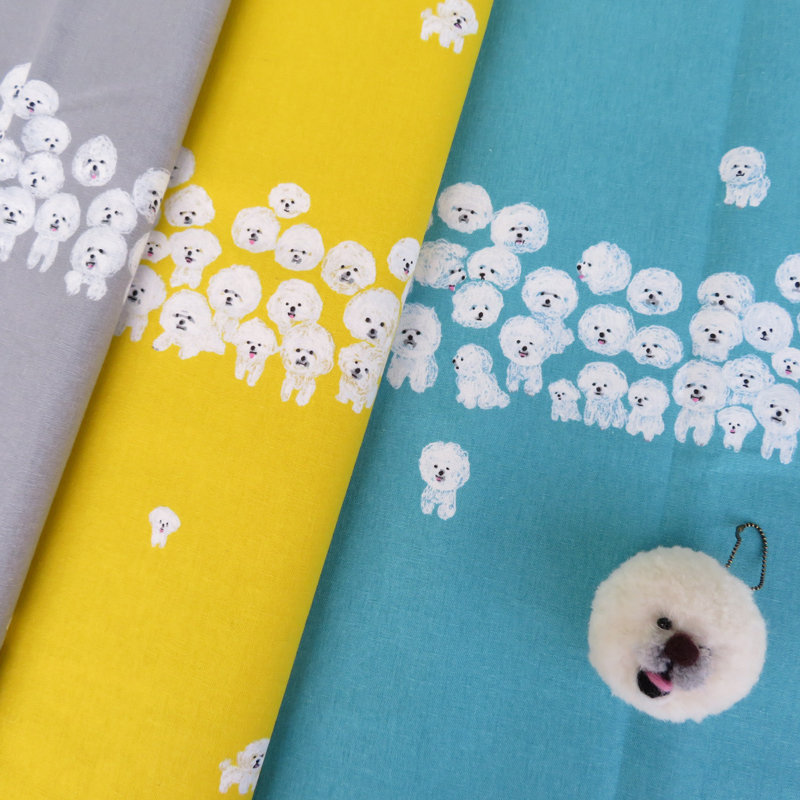
It has been two years since I started my textile brand. No doubt my pom-pom animal crafts brought me a chance to produce textile with Kokka. Hence, I designed the first series to show “this is exactly what a pom-pom animal creator would make”. I spent these years wondering what to do.
KF: Please share with us if you had difficulty retaining the world of pom-pom animals in the form of textile?
I actually enjoyed designing textile under the name of trikotri, because drawing has always been my most favorite thing ever since I was very young. Nevertheless, I struggled to establish a textile brand identity as “kotorinuno by trikotri” for two years.
Kokka let me do what I liked. That’s why each design in the first series had a different style.
While the design of [Pompom Animals] was conventional, other ones were what I simply wanted to have. I designed them while picturing cute children’s clothes made with my fabric. I turned it into fabric which I would be excited to use. There was no particular concept for the series.

KF: What did you keep in mind to make textiles?
As a regular customer of the fabric store, I wanted to make textiles I rarely encountered. I also decided to make each textile look like a single piece of art if it appeared on a big-screen. Repeat, which is the point where an identical design begins again on a textile, is generally set every 30 or 60 centimeters. But I wanted to set the repeat as long as possible on my textiles.
When working for the first series, I scanned every single hand-drawn pattern with my portable A4-sized scanner, and then collaged them. As for [Bichons], I tried not to place the same dog together so that the fabric could be more enjoyable when the fabric was spread.
KF: What kind of reaction did you get from people when the first series was released?
My new challenge wowed them, and apparently it made myself known to the people who didn’t make pom-poms but liked sewing. On social media, in fact, there were many posts of items made with my textile including children’s clothing and pouches.
I still receive comments with request for reproduction of some fabrics.

KF: Following the first series in 2019, the second series was released in the spring of 2020. Please share with us about this series.
The second series is completely different from the first one. I’m sure it confounds many people’s prediction that I have established my own style by experiencing a variety of things to do with the first series. The material for the first series was cotton linen canvas, which is solid, slightly thick, and perfect for making a bag. In making the second series, I wanted to adopt any other material for dress making.
The second series features five designs. While [Tori Lemon] and [Bichon Pompoms] are in cotton linen canvas, I adopted broadcloth for the other three designs: [Usa Gingham], [Neko Stripe] and [Chidori].
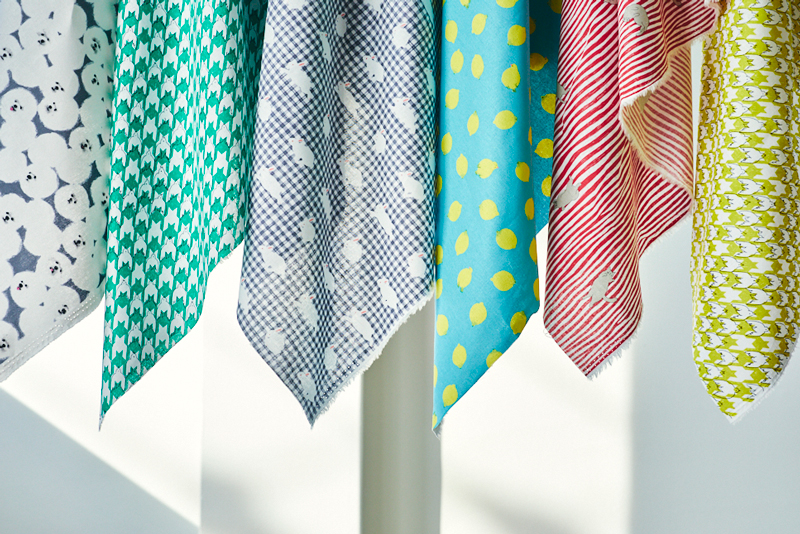
KF: The second series is closer to classic textile, with common patterns such as gingham check, stripe, and houndstooth. The hand-drawn motifs give accent to each fabric, though.
Since I launched my textile brand, I kept wanting to make an all-over print. I was also interested in the use of basic patterns such as gingham check and stripe. The second series reflects what I wanted to do. The thinner fabrics also work well for scarf or wrapping a lunch box.
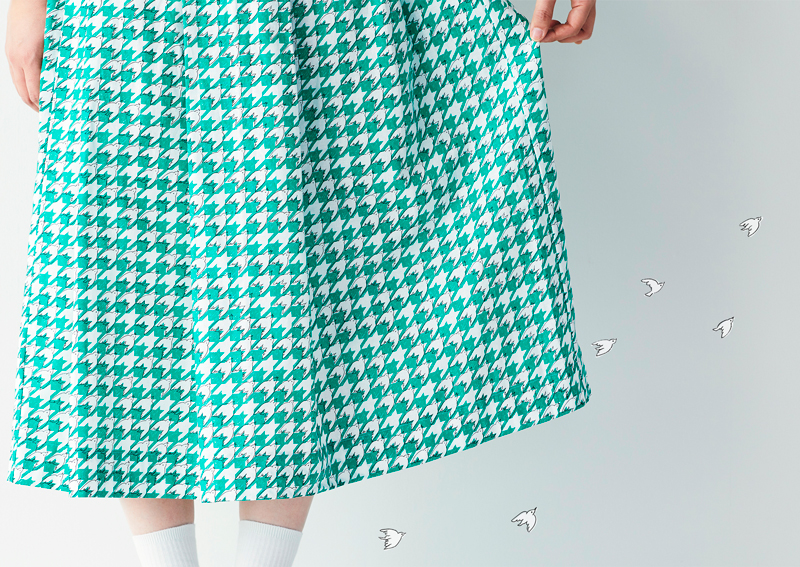
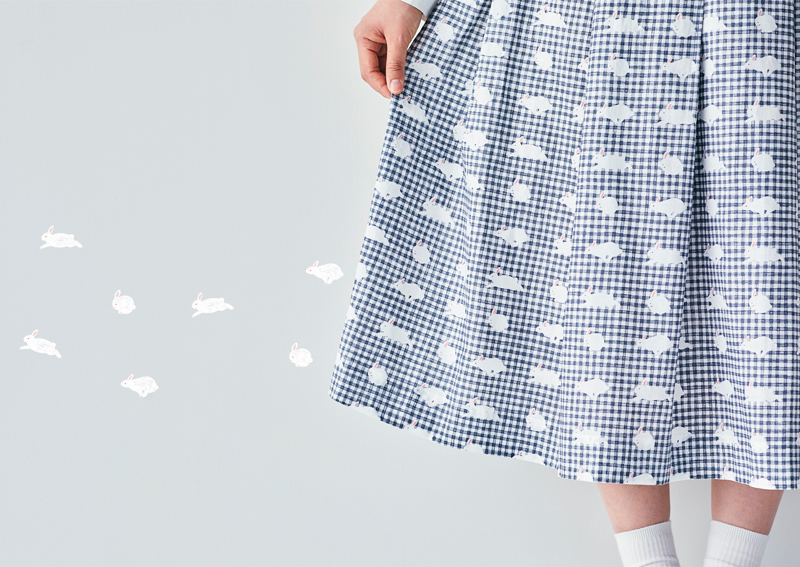
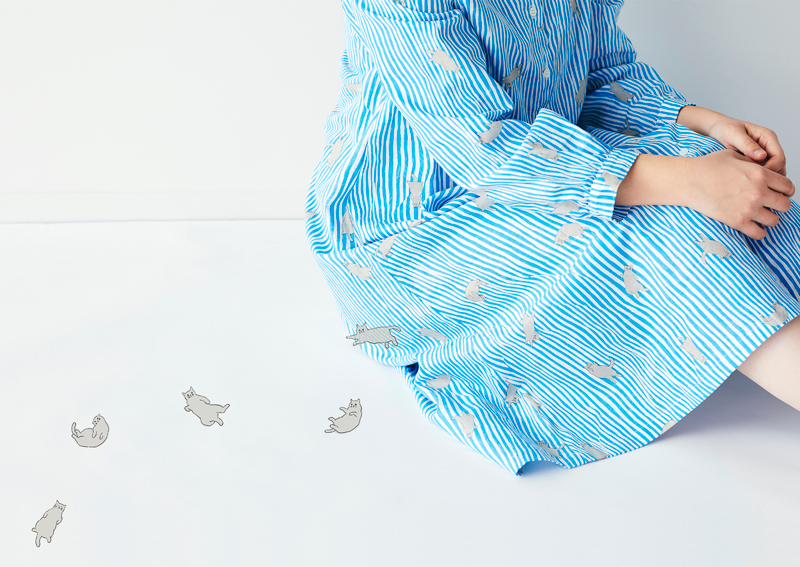
KF: How did you decide on the coloration?
Fukuda: Based on her color plan per design, we discussed further by checking color samples as well as hearing our sales staff. We agreed to use the same or similar blue for [Bichon Pompoms], which inherited the motif of [Bichons] from the first series.
As a result of using favorite colors, both fabrics resembled each other.

KF: But the subdued coloration gives textiles not-too-cute look.
I personally don’t like fairy-tale-like, super-cute, or too-childish design. I don’t like what an adult makes for children. It is not good to impose our values on children. Children should pick what they really like. That’s why neither my pom-poms nor what I create is specialized for children.
KF: You give your pom-pom a cute yet realistic look. Do you like animals?
I do! I used to have a Shiba Inu. Even now, I cannot help but speak to animals such as a stray cat or a sparrow when I come across them.
I make a point of creating lifelike pom-pom animals. That’s why I check detailed images taken from various angles for making pom-pom animals, with picture books and the internet.
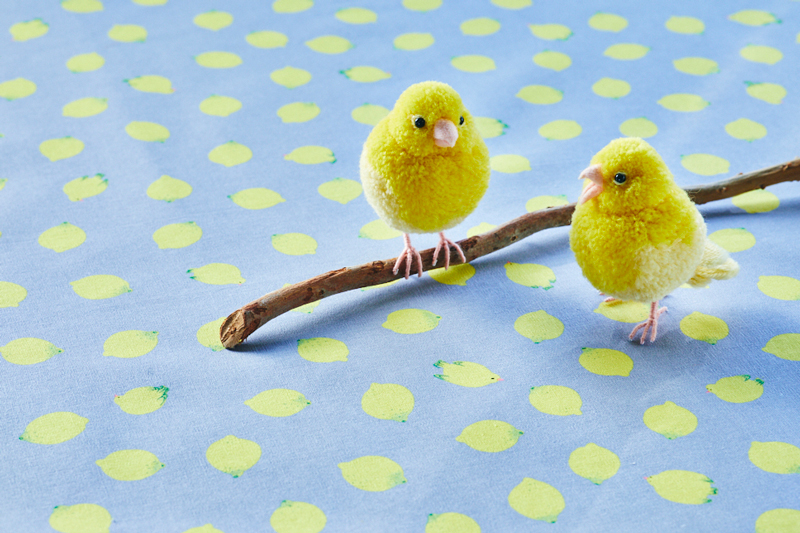
KF: How would you describe your daily life and working style?
After waking up, I have a relaxing time with a cup of tea and breakfast. Then I do household chores in the morning, including cooking all meals for the day. I work from the early afternoon through 10 o’clock approximately. My studio is a 10-minite walk from my house. I walk by the Kanda River on my way to work, where I sometimes see ducks swimming on or swallows flying over.


After four years working constantly on my pom-pom crafts books, I released my latest book Nuigurumi Pom Pom in the spring of 2020. For these years, the working cycle was like when I started making samples for another book just after finishing off one book. Once a new book project kicked off, I put almost all my energy and time into it. On average, it took eight months per book to make. I published five books so far. The book making made approximately 70 percent of my whole works. Now that the latest book has been released, I can finally focus on “kotorinuno” textiles.
KF: Don’t you teach a pom-pom class?
I hope to open up a class in my studio in the near future, while I occasionally teach in workshops or adult schools as a visiting lecturer. I signed a lease on the studio last year with my plan to start a class after completing my book. But I had to postpone having a class with the coronavirus pandemic.

KF: The third series of “kotorinuno” will be released in January 2021. What do you want to do with the upcoming series?
I have gradually come to understand what I want to make with “kotorinuno”, through two years of experience in making textiles in different patterns and materials. The lineup of the third series will be good for making children’s clothing, curtains for children’s rooms, or bags for adults. Hopefully a firm and durable fabric may be also included, which is suitable for making pants or skirt.
Seeing children playing around the park where I sometimes go to get refreshed, I came up with idea of cute patterns for children’s clothing. That will be reflected in the third series.
KF: Is there any concept for your textiles?
I have always been wondering what’s expected of “kotorinuno”. I usually make an original gift box by drawing illustration to put in a pom-pom animal. “When an original wrapping paper is needed to wrap in a pom-pom animal…”. When I asked myself such a question, I realized that I should make a textile like making an original wrapping paper for a pom-pom animal. That’s the “kotorinuno” style it should always be.

KF: A wrapping paper-like textile? What an interesting idea, it is! It’s truly the fusion of your two different works: pom-pom and textile.
Working on textile design activates a completely different part of my brain. In a way, it may be perfect for me because I can feel relaxed and enjoy when working on textile. Juggling both pom-pom making and textile design gives good balance to me. I love to fantasize a lot while I work on textile design while visualizing something. It’s fun for me to go back and forth between reality and fantasy.
KF: You may find more inspiration on daily life by fantasizing.
I give little importance to fantasy in my work of textile design. I simply like fantasizing. [Usa Gingham], for example, was created with my fantasy of a cute fabric with rabbits in gingham check background. I also enjoyed naming “Usa Gingham” after “usagi (rabbit)” and “gingham”. As you can see, I design textile with a playful spirit.
I always look for a potential motif in my daily life. I sometimes come up with ideas of cute or unique textile design from what I encounter in a park, such as a small flower or an unfamiliar bird. The work of textile design makes everyday objects adorable to me. I really like this work.

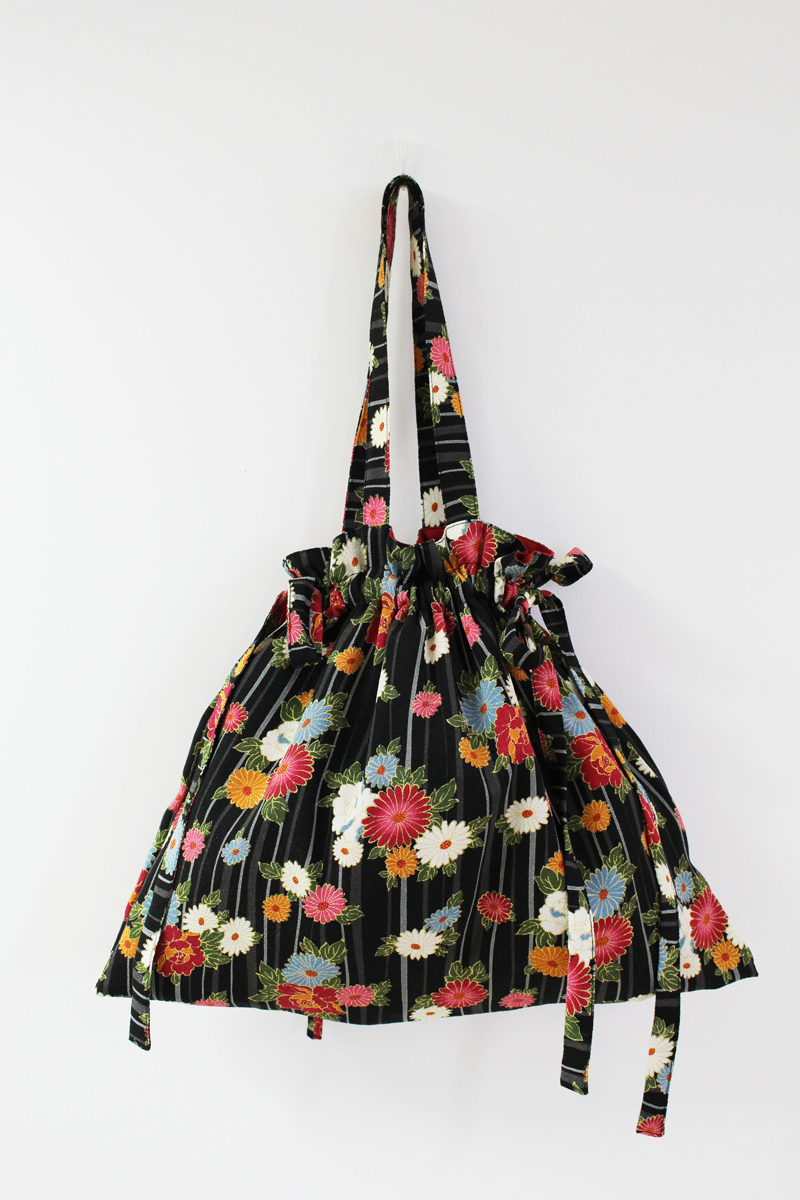
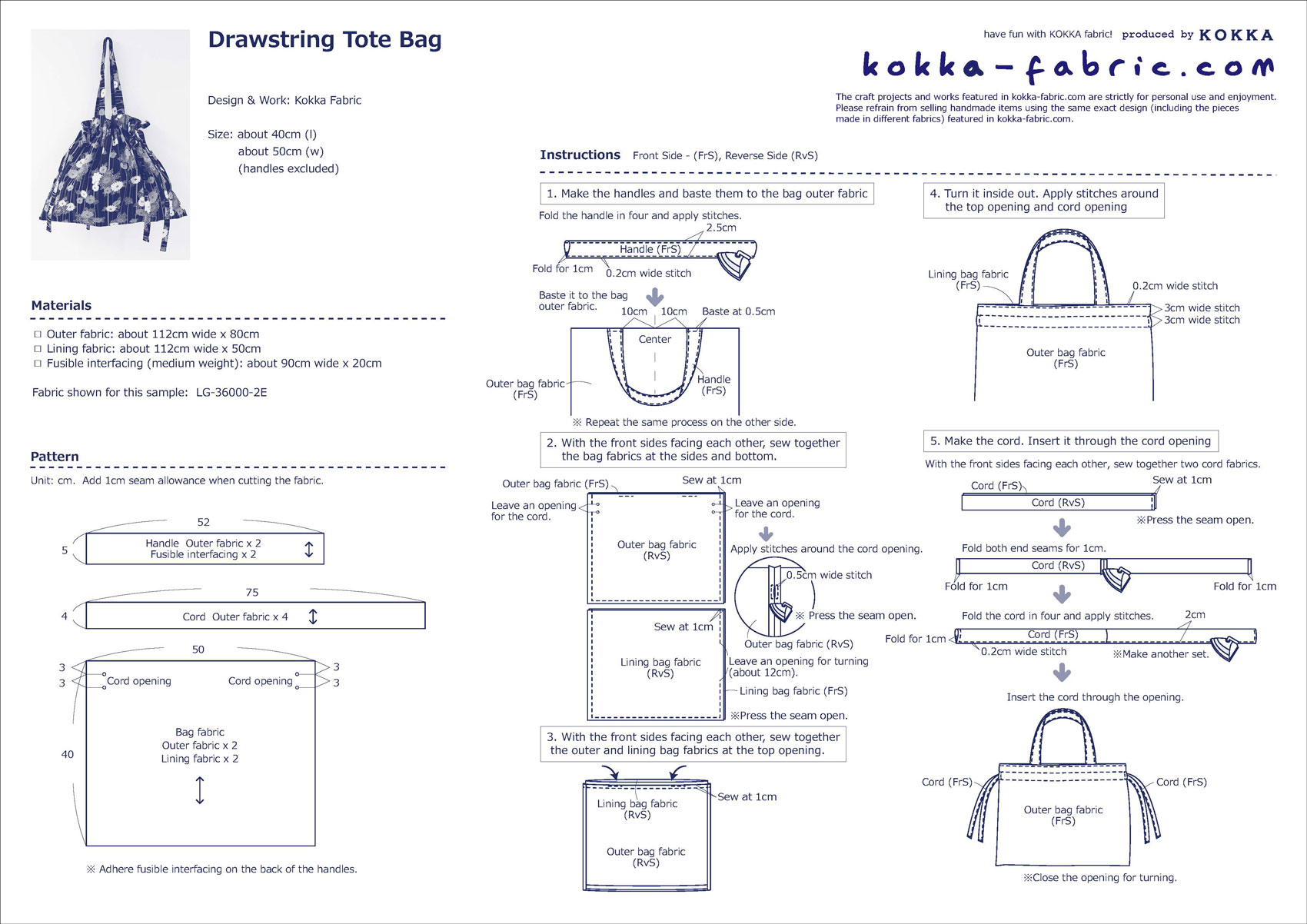

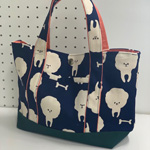 Tote Bag with a Convenient Pocket and Transition – Sewing Instructions
Tote Bag with a Convenient Pocket and Transition – Sewing Instructions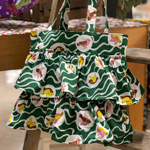 Tote Bag with Frills Sewing Instructions
Tote Bag with Frills Sewing Instructions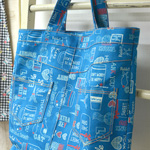 Denim Big Tote
Denim Big Tote

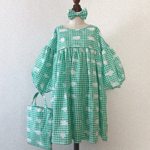 Handmade Kids Clothing – Fluffy Bunny Dress – Sewing Instructions
Handmade Kids Clothing – Fluffy Bunny Dress – Sewing Instructions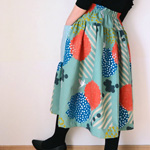 Gathered Skirt with Yoke
Gathered Skirt with Yoke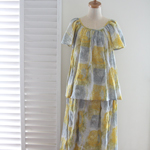 Simple Matching Set for a Grown Up – Gathered Neck Blouse and Tucked Skirt – Sewing Instructions
Simple Matching Set for a Grown Up – Gathered Neck Blouse and Tucked Skirt – Sewing Instructions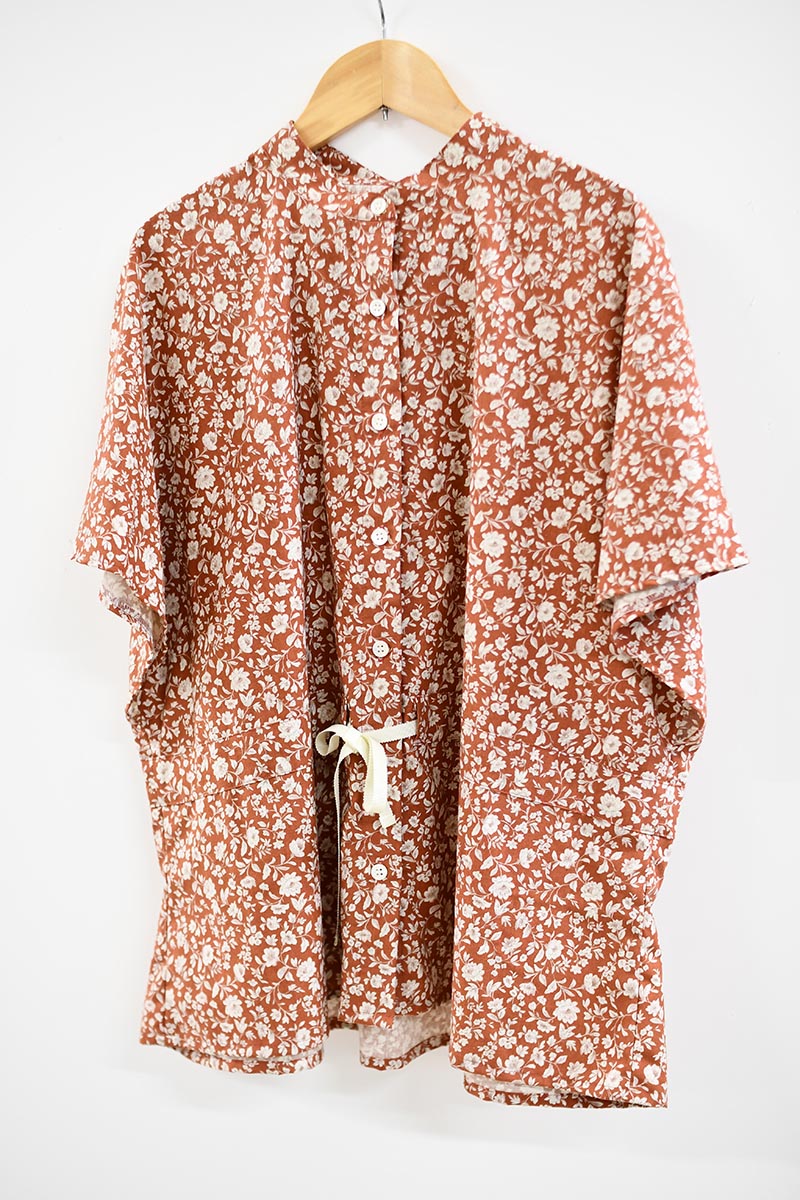
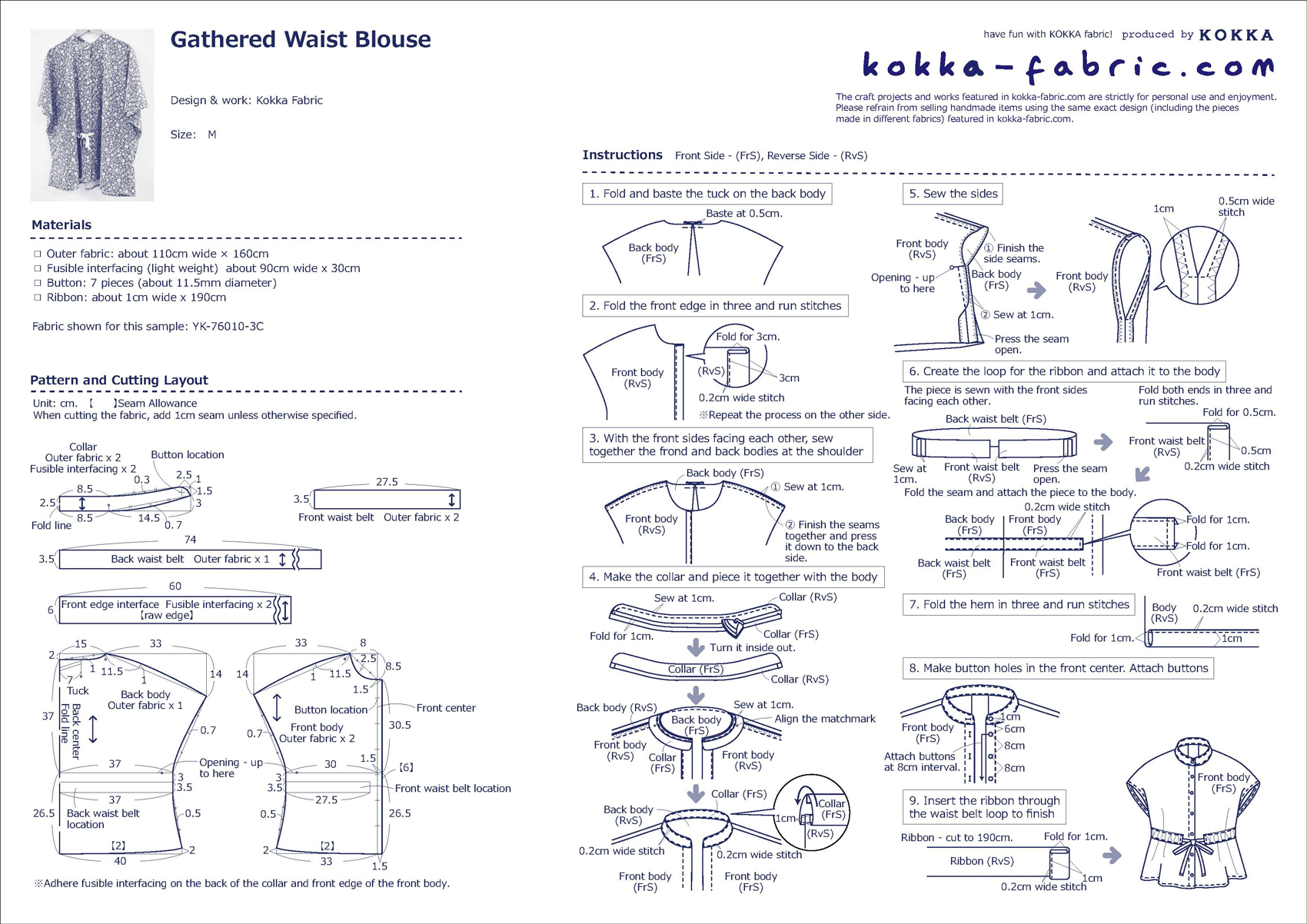
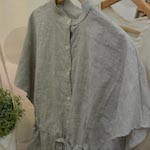 Gathered Waist Blouse
Gathered Waist Blouse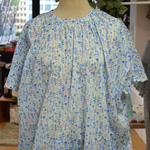 Grown Up Blouse with Gathered Neckline
Grown Up Blouse with Gathered Neckline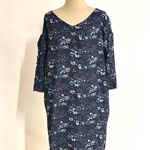 Dress with Frilled Sleeves – Sewing Instructions
Dress with Frilled Sleeves – Sewing Instructions


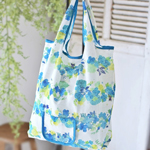 Shopping Bag Accented with Piping – Sewing Instructions
Shopping Bag Accented with Piping – Sewing Instructions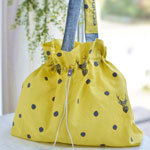 Made From A Single Piece of Fabric And It Is Foldable♪ – One Handle Drawstring Reusable Bag – Sewing Instructions
Made From A Single Piece of Fabric And It Is Foldable♪ – One Handle Drawstring Reusable Bag – Sewing Instructions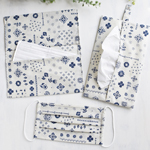 Three-piece Set Containing a Pleated Face Mask, Mask Case and Tissue Case – Made with Only 50cm of Fabric – Sewing Instructions
Three-piece Set Containing a Pleated Face Mask, Mask Case and Tissue Case – Made with Only 50cm of Fabric – Sewing Instructions



















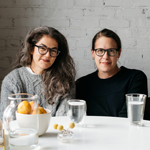 Visit Artist 018: Tess Darrow and Kara Yanagawa (Egg Press)
Visit Artist 018: Tess Darrow and Kara Yanagawa (Egg Press)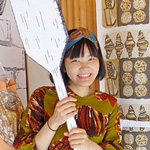 Visit Artist 016: Aco Sakamoto (Textile Designer)
Visit Artist 016: Aco Sakamoto (Textile Designer)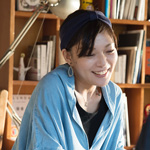 Visit artist 017: Ayano Ichiyanagi (Painter / Designer)
Visit artist 017: Ayano Ichiyanagi (Painter / Designer)